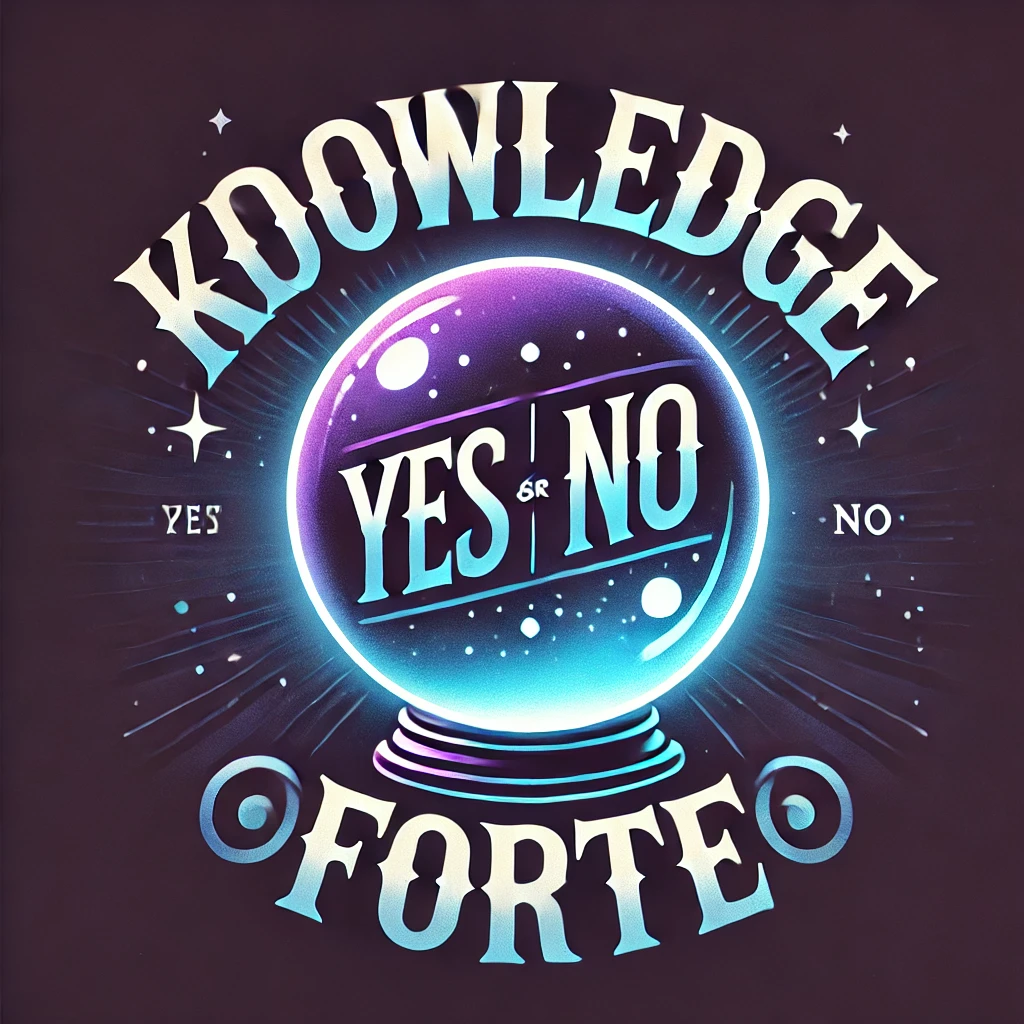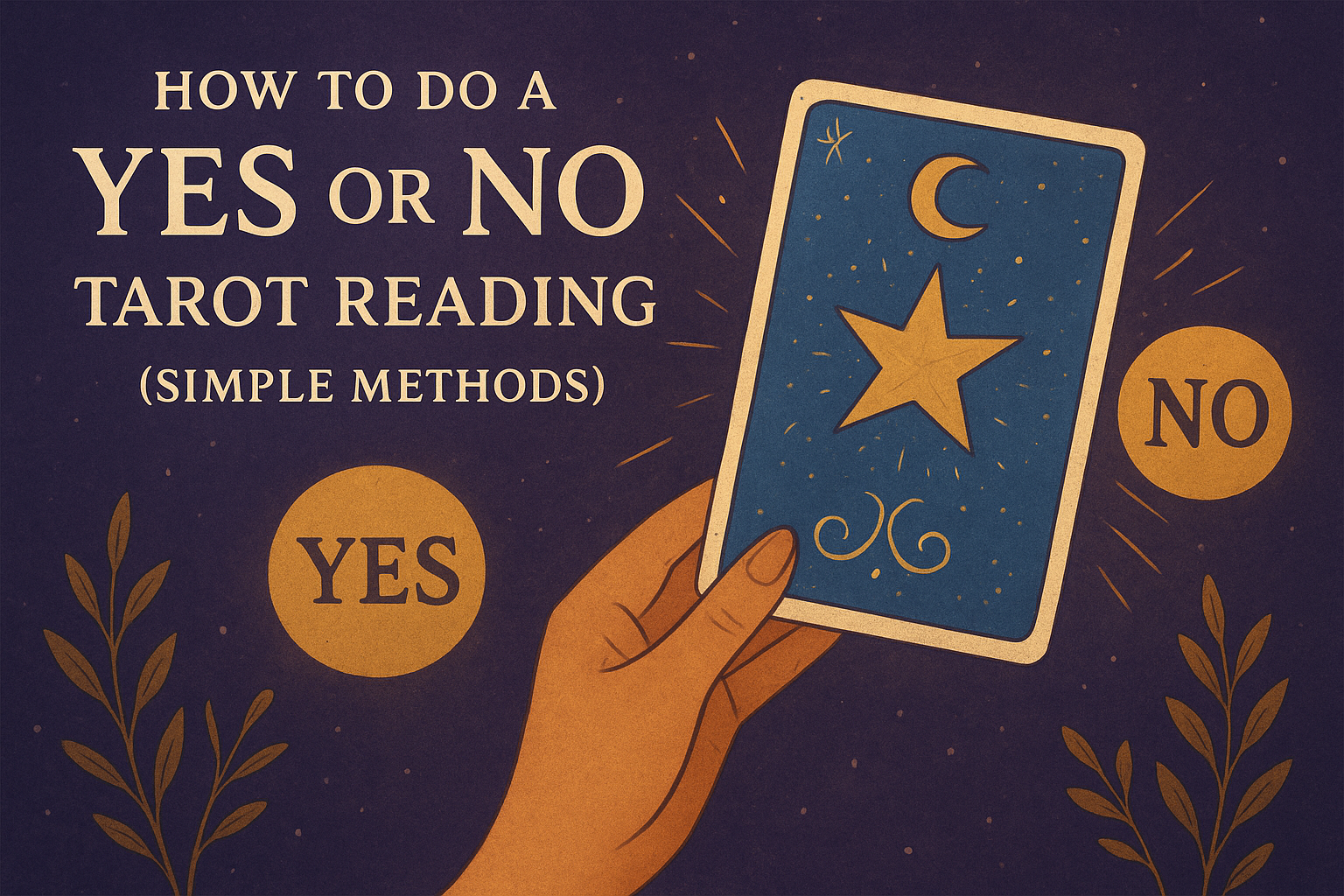If you’ve ever wondered how to do a yes or no tarot reading at home, the good news is it’s much easier than you think. Unlike full tarot spreads that dive deep into tarot card meanings, this simplified method focuses on giving you straightforward answers. Whether you’re curious about love, career, or daily choices, tarot can provide quick insights through methods like the single card draw, three-card spread, or suit-based approach. And if you’d rather skip the cards altogether, you can always try this online yes or no oracle for an instant answer.
What Is a Yes or No Tarot Reading
A Yes or No Tarot reading is exactly what it sounds like — instead of diving into a long, detailed spread, you pull cards to get a straightforward answer: yes, or no. It’s one of the quickest and easiest ways to use tarot, especially when you don’t have time (or patience) for a full reading.
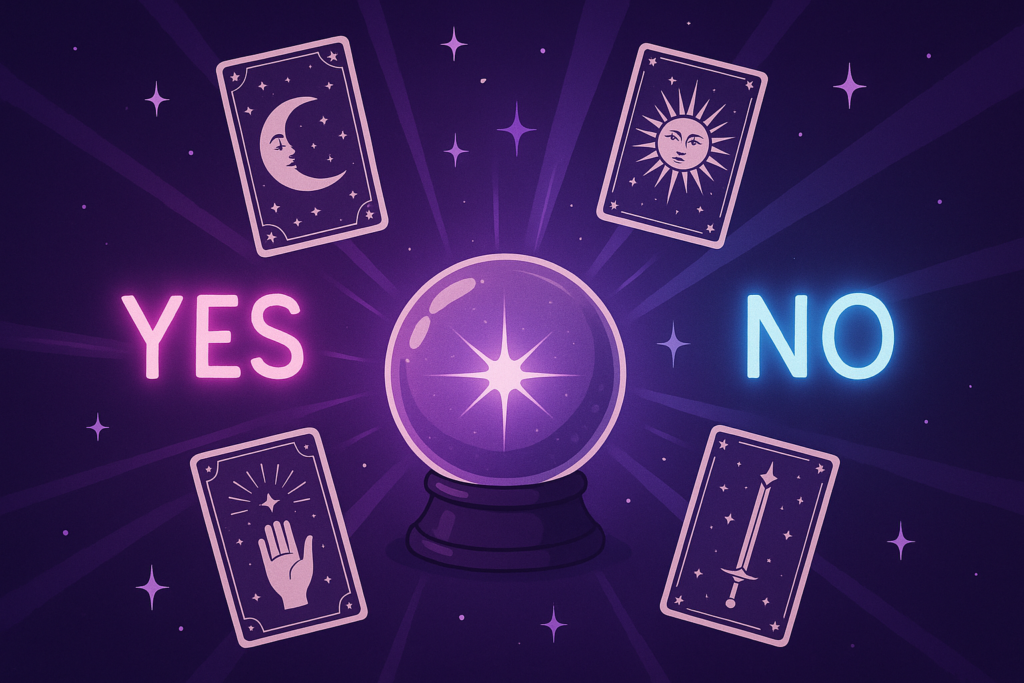
People often turn to this method when they’re stuck between two choices: “Should I text them back?” … “Will this job interview go well?” … “Is now the right time to travel?” Instead of overthinking, a Yes/No reading gives you a simple direction to consider.
Of course, tarot is full of symbolism, and the cards aren’t magic fortune-telling machines. Think of a Yes/No tarot reading more like a helpful nudge — it won’t live your life for you, but it can make your decision-making process feel a whole lot easier (and more fun), If you’re curious about where all of this started, here’s a quick read on the history of tarot.
Preparation Before a Yes or No Tarot Reading
Before you start flipping cards, it helps to set the stage — because the clearer your mind, the clearer your answer will feel. Here are a few quick prep tips:
· Set your intention: Decide what you really want to know. A vague “Will I be happy?” is tricky, but something like “Should I say yes to this new project?” works much better.
· Ask one question at a time: Tarot isn’t great with multi-part questions. Keep it simple and focused.
· Create a calm vibe: You don’t need candles and crystals (unless you want them!). Just shuffle your deck in a quiet space where you can focus.
· Trust the process: Don’t second-guess the first card you pull — the fun of a Yes/No reading is in its simplicity.
Think of this step as tuning your “question frequency.” The more specific and intentional you are, the easier it is for your cards to give you that quick yes or no answer you’re looking for.
How to Do a Yes or No Tarot Reading with a Single Card: Method 1
This is the fastest and most popular way to do a Yes or No Tarot reading — just draw one card and let it speak for itself.
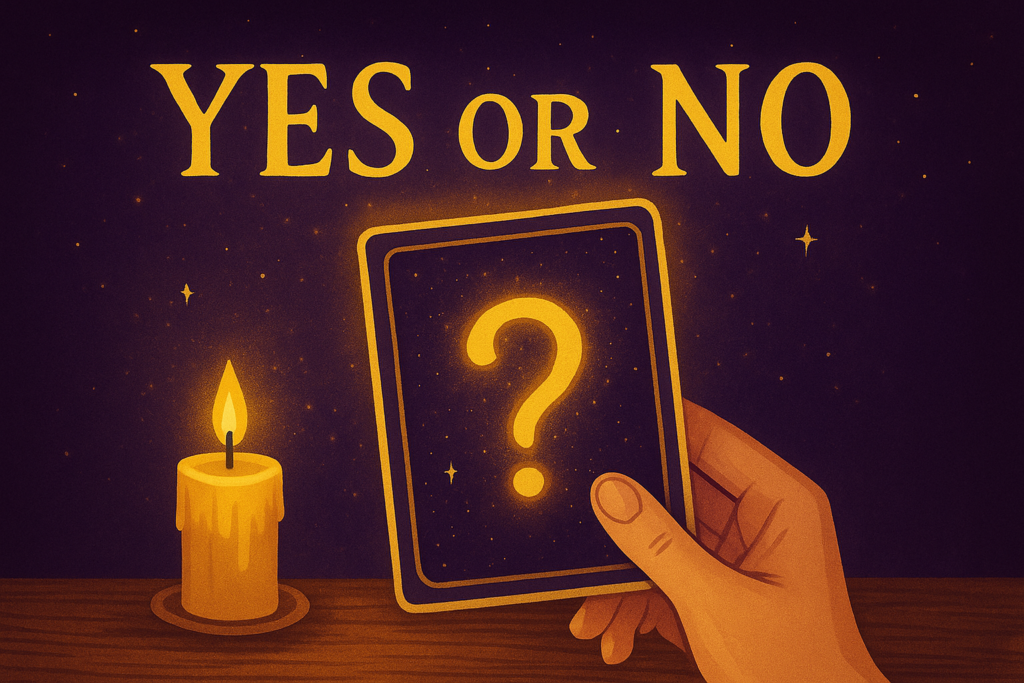
· How it works: Shuffle your deck while focusing on your question, then pull a single card.
· Interpreting the card:
o Positive or uplifting cards (like The Sun, Ace of Cups, The World) usually mean Yes.
o Challenging or negative cards (like The Tower, Ten of Swords, Five of Pentacles) usually mean No.
o Neutral cards can suggest “Not right now” or “More information needed.”
Pros: Quick, clear, and easy to do anywhere — even if you only have a few minutes.
Cons: Because it’s just one card, it might feel a little too simplistic if your question is more complex.
👉 Think of it as the tarot version of flipping a coin — but with way more personality.
👉 Want a deeper dive into card meanings? Check out the Major Arcana cards for inspiration. If you want to know the difference between Oracle cards and Tarot cards, please read the article by clicking the link.
Method 2: Three-Card Yes or No Reading
If one card feels too limiting, the three-card method adds a little extra depth while still keeping things simple. Instead of relying on a single draw, you pull three cards and let the majority decide.
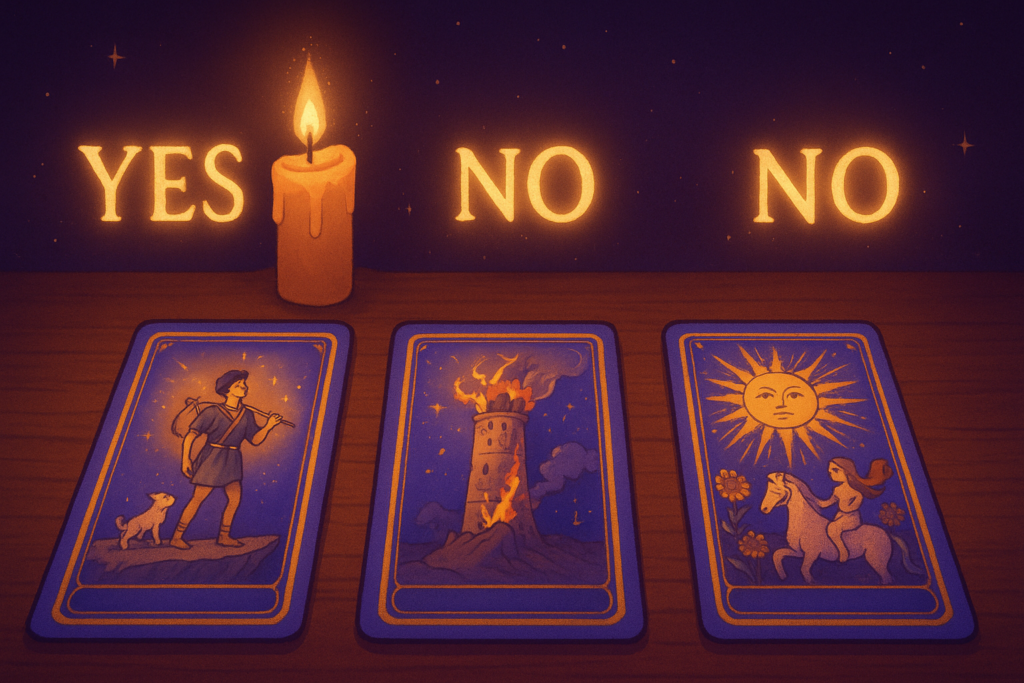
· How it works: Shuffle your deck, focus on your question, then draw three cards in a row.
· Interpreting the spread:
o 2 or 3 positive/uplifting cards → Leaning Yes.
o 2 or 3 negative/challenging cards → Leaning No.
o A mix of strong positives and negatives → The answer might depend on timing or action.
Why it works: You get a broader picture than just one card, but it’s still fast and easy.
Best for: Questions where you feel a bit torn, like “Should I move to a new city?” or “Is this relationship worth pursuing?”
👉 Think of it as asking your tarot deck to “vote” on your question — majority rules! If you want to deep dive, you can read our article on Oracle Cards.
👉 Curious to test it out right now? You can try this online astrology oracle and see what answer you get instantly.
Method 3: Suit-Based Yes or No Reading
This method is great if you want a quick answer with a touch of tarot symbolism. Instead of focusing only on individual card meanings, you look at the suits to decide whether the answer is yes or no.
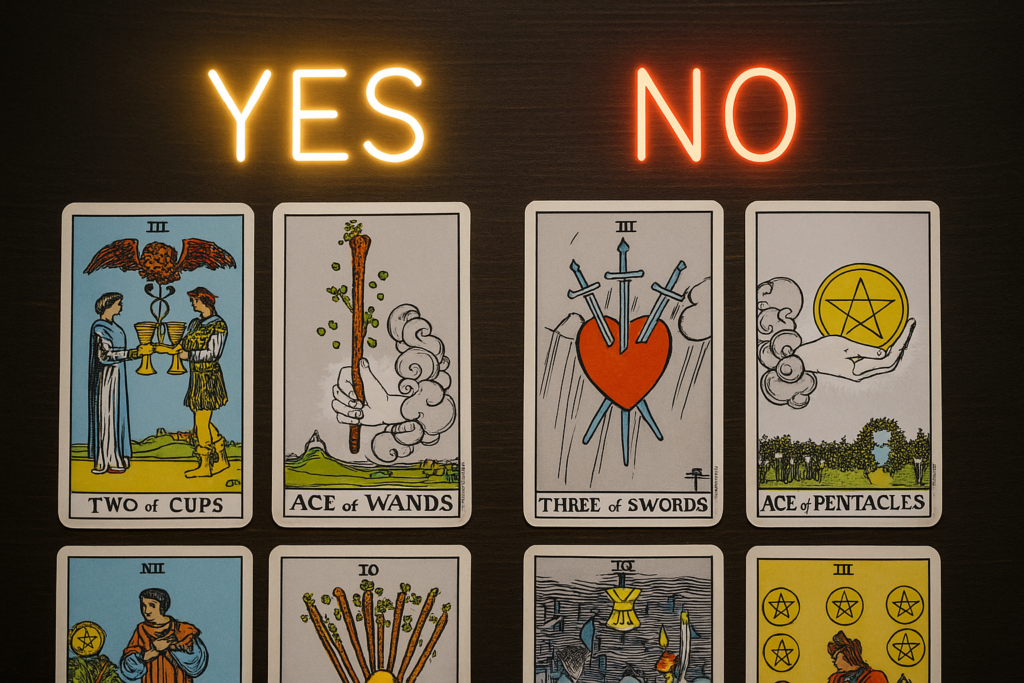
· How it works: Shuffle your deck and draw several cards (3 to 5 works well).
· Assign the suits:
o Wands & Cups → Yes (they’re generally tied to energy, passion, and emotions).
o Swords & Pentacles → No (they often connect to challenges, struggles, or practical obstacles).
· Interpret the spread: Whichever suit dominates gives you the answer.
Example: If you pull three cards and two of them are Cups, you’re looking at a Yes. If two are Swords, it’s a No.
Why people like it: It’s straightforward but still feels connected to the deeper symbolic side of tarot.
👉 Think of this as a tarot “team game” — whichever suit shows up the most wins the round.
👉 If you’re new to suits, here’s a quick guide on tarot suits explained.
Tips for Interpreting Yes or No Tarot Readings
Yes/No tarot is meant to be simple, but a few extra tips can make your readings feel more accurate (and less confusing):
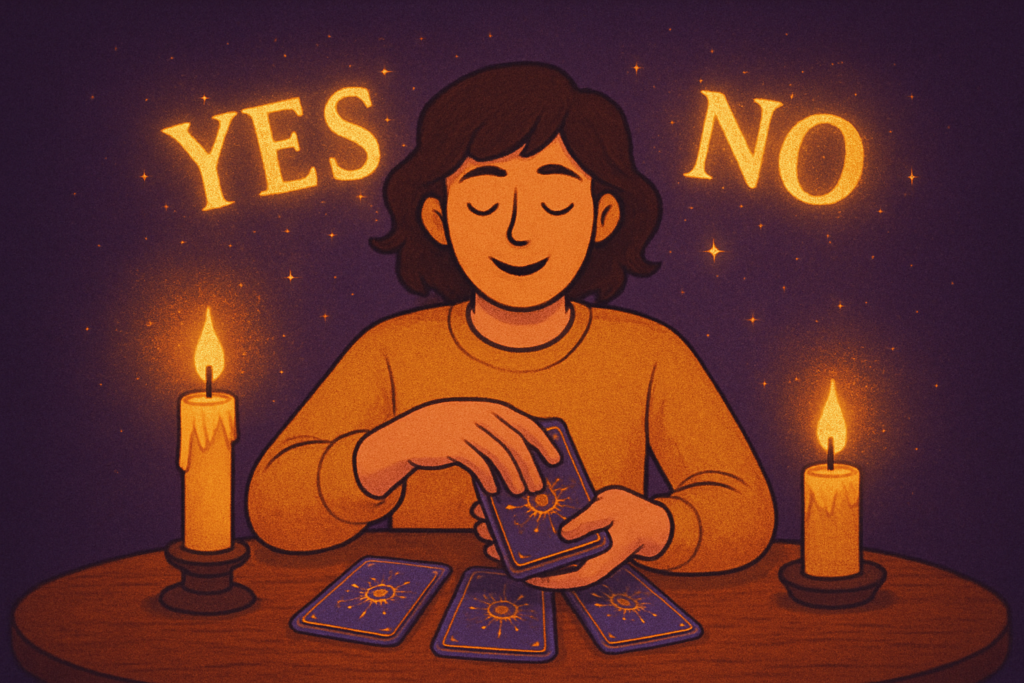
· Trust your gut first: If your initial reaction is “that’s a Yes,” stick with it — overthinking usually muddies the water.
· Pay attention to upright vs. reversed cards: Upright often leans positive, reversed often leans negative.
· Don’t ignore the card’s vibe: Even in a Yes/No reading, The Lovers carries a very different energy than The Devil.
· Use it as guidance, not destiny: Tarot works best as a reflection tool, not a fortune-telling machine.
· Jot it down: Keeping a tarot journal helps you notice patterns over time — and makes the whole process more fun.
👉 Remember, a Yes/No tarot reading isn’t about predicting the future with 100% certainty. It’s about giving you a quick nudge in the right direction so you feel less stuck.
If you are Interested more you can also read about our article on oracle cards.
Common Mistakes to Avoid
Even though a Yes or No Tarot reading is simple, there are a few traps that can throw off your results. Here’s what to watch out for:
· Asking vague questions: “Will I be happy?” is too broad. Try something specific like “Will this new job opportunity make me happier?”
· Asking multiple questions at once: Tarot works best when you keep it focused. One question = one answer.
· Repeating the same question over and over: If you don’t like the answer, shuffling again won’t magically change it (well, most of the time 😅).
· Forgetting the bigger picture: Tarot cards are full of symbolism — even in Yes/No readings, a card’s deeper meaning can give you extra clues.
· Relying only on tarot: Use it as guidance, but don’t let a single card decide your entire life path.
👉 The fun part of tarot is balancing the quick answers with your own judgment and intuition.
Yes, or No Tarot Reading vs. Online Tools
Sometimes you want the ritual of shuffling your deck, and other times you just want a fast answer. That’s where online tools come in.
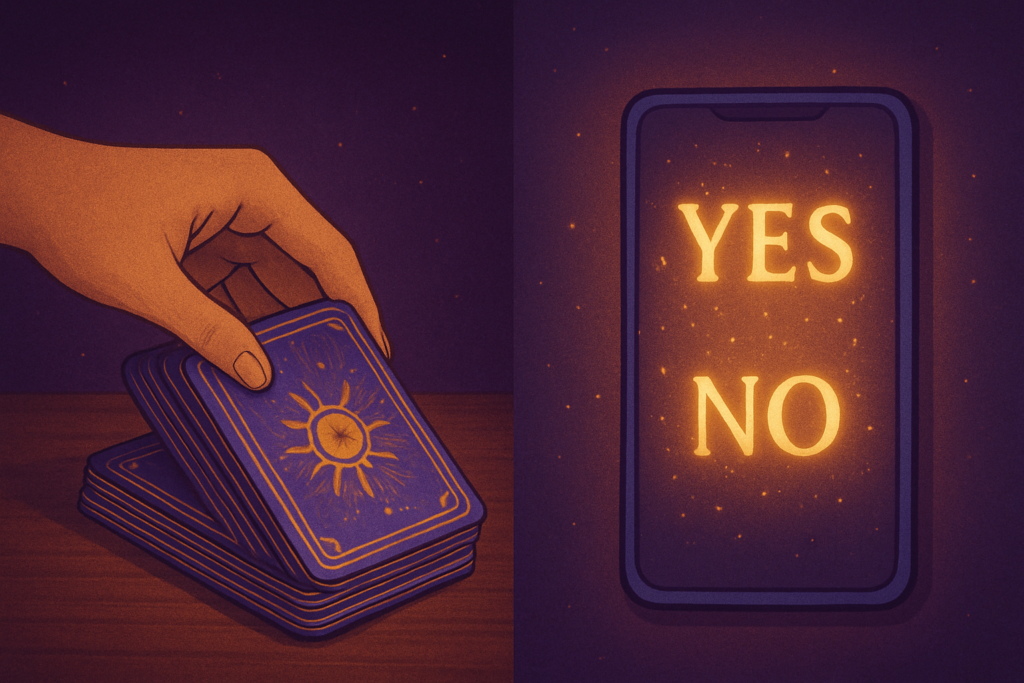
· Tarot readings: They carry tradition, symbolism, and the personal touch of interpreting the cards yourself. It can feel more meaningful, especially if you enjoy the process.
· Online Yes/No tools: They’re quick, fun, and perfect when you don’t have your cards handy. With one click, you get a clear Yes or No to guide your next move.
Both options have their place — tarot for when you want depth, and online oracles for when you want speed.
👉 Curious to test it out right now? You can try this online dice oracle and see what answer you get instantly.
Conclusion
Now that you know how to do a yes or no tarot reading, you can confidently try it whenever you need quick guidance. It can be surprisingly insightful. Whether you’re pulling a single card for a quick answer, using the three-card majority vote, or trying the suit-based method, each approach offers a different way to get clarity when you’re feeling stuck.
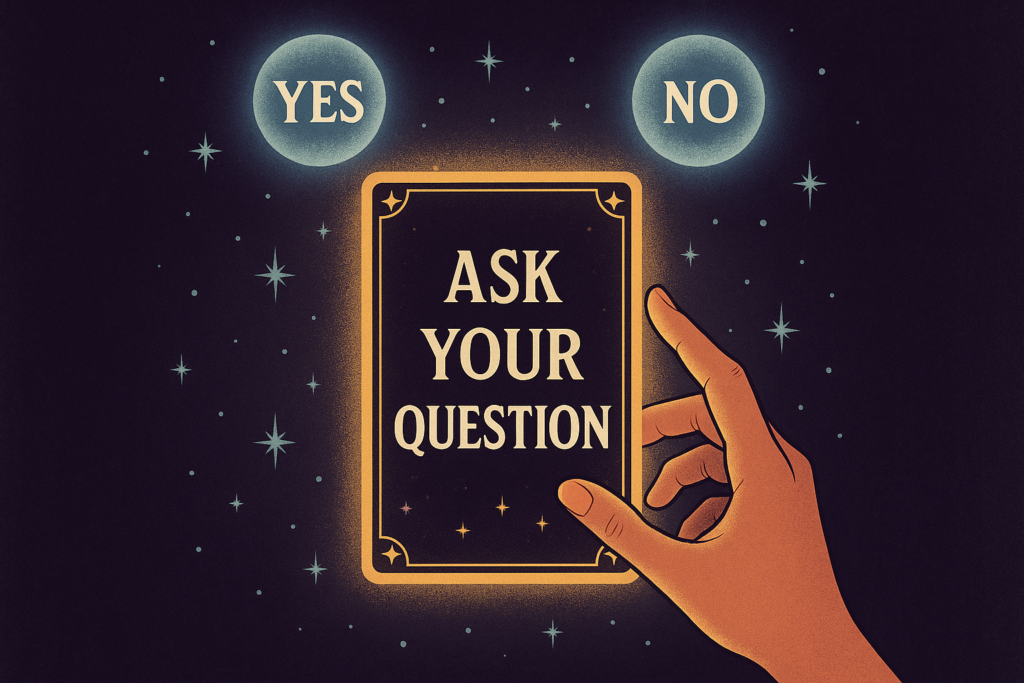
The key is to keep your questions clear, trust your intuition, and treat the results as gentle guidance rather than absolute truth. Tarot is less about predicting the future and more about giving you the confidence to make decisions with a little extra insight.
And if you ever want a lightning-fast option (no deck required), you can always try this online yes/no oracle to get an instant answer.
